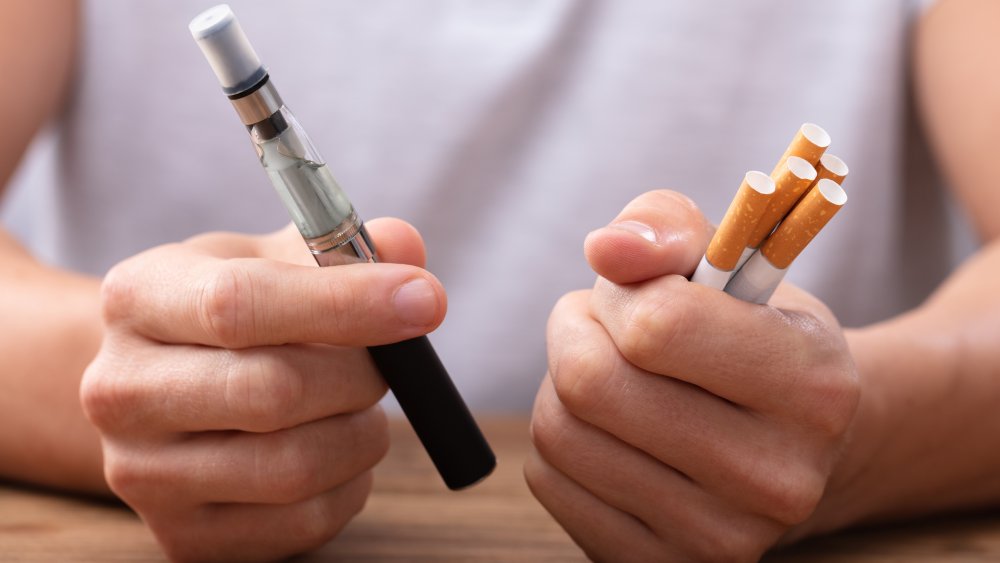Study Reveals Promising News About Teens And Vaping
Once marketed as a way to stop smoking cigarettes, vaping has come under increasing scrutiny from the CDC and FDA over the last couple of years. Between 2016 to 2018, the number of nonsmokers who started using e-cigarettes doubled, according to research from the Johns Hopkins Ciccarone Center for the Prevention of Cardiovascular Disease, which estimated e-cigarettes were to blame for introducing 6 million adults to highly-addictive nicotine (via The New York Times). And it wasn't just the adults getting swept up in the trend; use by high school and middle school students in 2019 reached record highs of 28 percent and 11 percent, respectively, with Juul being the most popular brand (via NPR).
This uptick, along with the emergence of e-cigarette or vaping product use-associated lung injury (EVALI) largely in Texas, Illinois, New York, and California (via CDC), prompted the federal government to intervene last September by declaring a ban on flavored e-cigarettes favored by teens. One year later, a survey released by the FDA and CDC announced good news: 1.8 million fewer youth vape today compared with the number in 2019, signaling a significant shift in the once-rising numbers.
"Although the decline in e-cigarette use among our Nation's youth is a notable public health achievement, our work is far from over," said CDC Director Robert R. Redfield, M.D., in a statement. "Youth e-cigarette use remains an epidemic."
Vaping remains a concern, however
Despite the progress, a whopping 3.6 million middle and high school students still report vaping. What's more, kids have found a way around federal regulations by smoking disposable e-cigarettes, a new type of product from companies such as Puff Bar that are available in youth-pleasing fruit and mint flavors due to a loophole (via The New York Times). "Puff came out as the new popular thing that every single kid was doing and I hopped on that fad," one student explained to the Times. "They have flavors like the Juul flavors. It's basically like smoking a Juul." In response to the findings, the FDA issued warning letters this month to three companies selling unauthorized e-cigarette products with a promise to make addressing flavored disposables a priority.
With more students looking to quit their e-cigarette habit, efforts to close regulation loopholes are welcome news. According to a new study from the University of Southern California, 45 percent of young people reported a serious desire to kick vaping to the curb. "This suggests to me that vaping cessation interventions are urgently needed," said study co-author Adam Leventhal, Ph.D., founding director of the USC Institute for Addiction Science. "Scientists need to determine whether counseling programs that help teens quit cigarette smoking can be adapted for e-cigarette vaping and then help teens access these programs."


